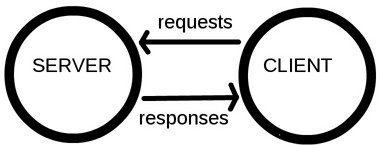A web application or web app is a client–server computer program in which the client (including the user interface and client-side logic) runs in a web browser. Common web applications include webmail, online retail sales, online auctions, wikis, instant messaging services and many other functions.
Web sites most likely to be referred to as “web applications” are those which have similar functionality to a desktop software application, or to a mobile app. HTML5 introduced explicit language support for making applications that are loaded as web pages, but can store data locally and continue to function while offline.
Web applications can be considered as a specific variant of client–server software where the client software is downloaded to the client machine when visiting the relevant web page, using standard procedures such as HTTP. Client web software updates may happen each time the web page is visited. During the session, the web browser interprets and displays the pages, and acts as the universal client for any web application.
Applications are usually broken into logical chunks called “tiers”, where every tier is assigned a role. Web applications lend themselves to an n-tiered approach by nature with the most common structure is the three-tiered application. A web browser is the first tier (presentation), an engine using some dynamic Web content technology (such as ASP, CGI, ColdFusion, Dart, JSP/Java, Node.js, PHP, Python or Ruby on Rails) is the middle tier (application logic), and a database is the third tier (storage). The web browser sends requests to the middle tier, which services them by making queries and updates against the database and generates a user interface.
Web Client-Server
Computers connected to the web are called clients and servers. A simplified diagram of how they interact might look like this:

- Clients are the typical web user’s internet-connected devices (for example, your computer connected to your Wi-Fi, or your phone connected to your mobile network) and web-accessing software available on those devices (usually a web browser like Firefox or Chrome).
- Servers are computers that store webpages, sites, or apps. When a client device wants to access a webpage, a copy of the webpage is downloaded from the server onto the client machine to be displayed in the user’s web browser.
When you type a web address into your browser (for our analogy that’s like walking to the shop)
- The browser goes to the DNS server, and finds the real address of the server that the website lives on (you find the address of the shop).
- The browser sends an HTTP request message to the server, asking it to send a copy of the website to the client (you go to the shop and order your goods). This message, and all other data sent between the client and the server, is sent across your internet connection using TCP/IP.
- Provided the server approves the client’s request, the server sends the client a “200 OK” message, which means “Of course you can look at that website! Here it is”, and then starts sending the website’s files to the browser as a series of small chunks called data packets (the shop gives you your goods, and you bring them back to your house).
- The browser assembles the small chunks into a complete website and displays it to you (the goods arrive at your door — new shiny stuff, awesome!).

